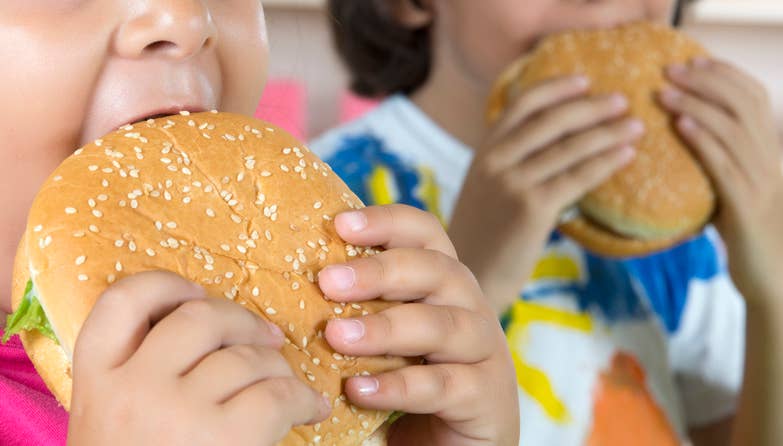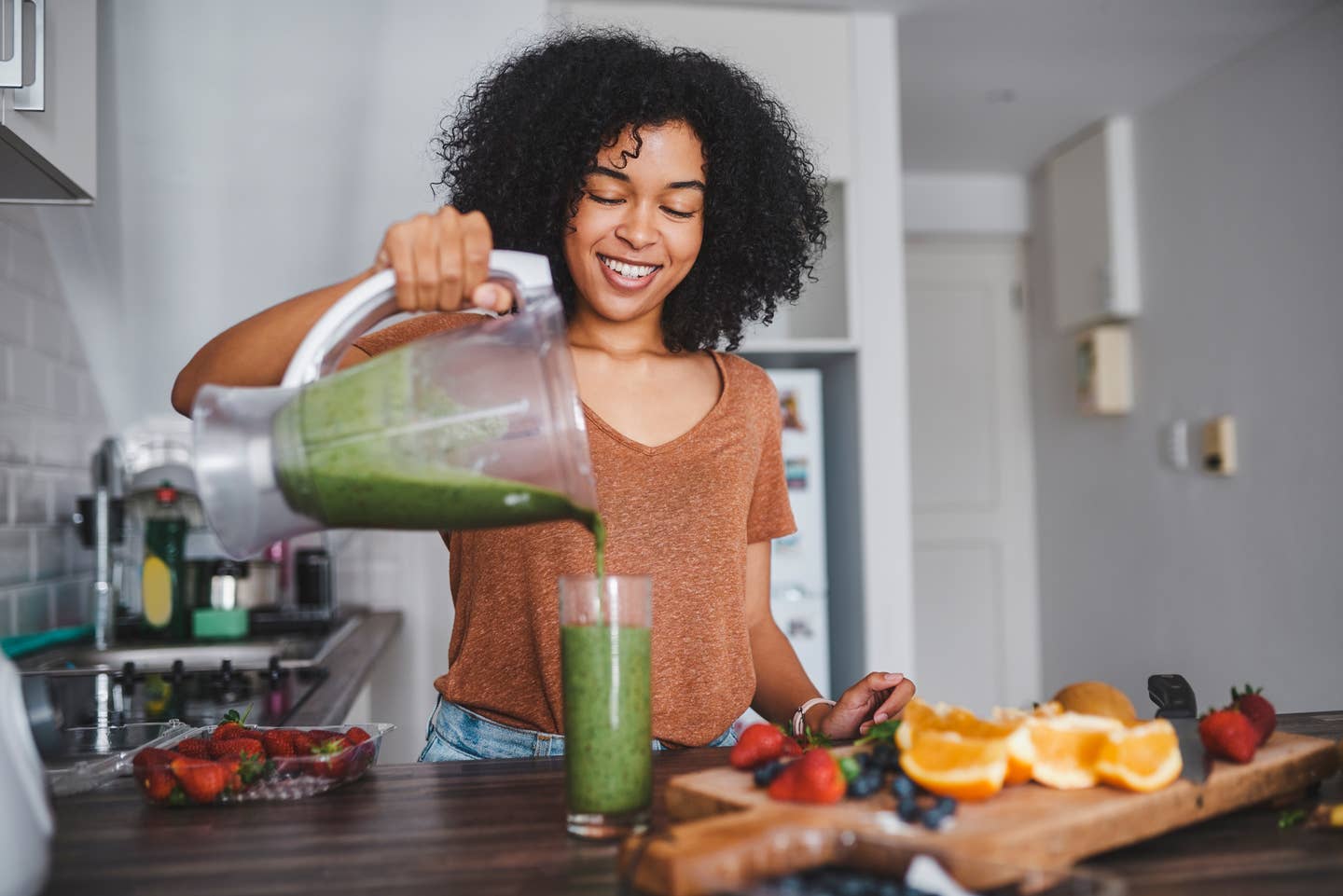
Not-So-Happy Meals: 2/3 of What Kids Eat Is Ultra-Processed Food, Study Finds
An alarming new study reveals that American children and teens consume more than two-thirds of their daily calories from ultra-processed foods, which has dire implications for their current and future health. The new study, published in JAMA (The Journal of the American Medical Association), showed that junk food consumption is going in the wrong direction, having risen from 61 percent in 1999 to an astounding 67 percent in 2018, raising concerns over the health, weight, and future disease risk of our next generation.
What constitutes ‘ultra-processed foods’ and why are our youngsters eating so much of them? The article explores how manufacturers make junk foods addictive, full of additives, and stripped of nutrients and naturally occurring fiber. Meanwhile, the health effects of overconsuming them are sending our youth spiraling into a lifestyle of chronic diseases such as obesity, heart disease, and raising their risk of obesity-related cancers. Here's what to do about it, from a nutritionist who wants to help kids achieve a healthy, balanced, nutrient-dense diet.
What are ultra-processed foods?
Despite what we think we know – that ultra-processed foods come in bags, boxes, with nutrition labels and are made in a plant – there is still some debate among experts about the definition of ultra-processed foods, according to a 2019 review. Still, many policymakers accept the NOVA classification by the Food and Agriculture Organization of the United Nations (FAO) as "formulations of ingredients created by a series of industrial techniques and processes." You’d be right to think that sounds pretty scary.
The FAO explains that the "process" in processing starts with manufacturers fractioning whole foods into substances, including sugars, oils and fats, proteins, starches, and fiber. Then, they obtain the cheapest substances they can from "high-yield" foods such as corn, wheat, and cane sugar, or by pureeing and grinding animal carcasses that are the byproducts of animal farming.
Following this ingredient gathering, manufacturers create chemical modifications such as hydrogenation and use industrial processes such as molding and pre-frying to further alter the food into a more "likable" structure Next, they add bright colors, fake flavors, preservatives, and other additives to make the product "palatable or hyper-palatable" (read addictive to kids and adults).
By the time the chips or crackers hit your store's shelves, despite the lovely pictures of wheat on the label, this is not real food or even something your grandmother would have been able to grow and make at her kitchen table. It’s a version of food made as cheaply as possible, to keep our kids (and us) eating more.
Examples of ultra-processed foods
The JAMA study indicated that up to 11.2 percent of the calories kids and teens eat came from ready-to-eat or takeout dishes such as frozen pizza and fast-food burgers, and between 10.6 and 12.9 percent of calories were derived from packaged sweets and desserts. Add it up and you have up to 33.3 percent of their calories coming from food that is devoid of nutrients but high in saturated fat, added sugar and that causes blood sugar to spike, insulin to surge, and the inevitable weight gain that results.
This is not a pretty picture, but parents have at least gotten the message about sodas. Encouragingly, calories from sugar-sweetened beverages such as sodas have dropped by 51 percent, from 10.8 percent of overall calories in 1999 to 5.3 percent in 2018, which the authors note is a direct result of public awareness campaigns to avoid sugary drinks.
Examples of ultra-processed foods and drinks include (according to NOVA):
- candies and confectionary
- cookies, pastries, cakes, and cake mixes
- carbonated sodas and energy drinks
- mass-produced packaged bread and buns
- poultry and fish ‘nuggets’ and ‘sticks’
- sausages, burgers, hot dogs, and other reconstituted meat products
- pre-prepared meat, cheese, pasta, and pizza dishes
- powdered and packaged ‘instant’ soups, noodles, and desserts
- sweetened breakfast cereals and fruit yogurt
- margarine and other spreads
- baby formula
How does junk food damage kids’ health?
Overeating junk food can harm children’s physical and mental health and lead to health issues even before they become adults. But a new study just released shows that eating a diet high in meat, dairy, and processed foods early in life can lead to more heart disease later in life. While the opposite is also true: Leaning into a plant-based or plant-centric diet (of healthy whole foods like fruit, vegetables, nuts, seeds, and grains) can reduce one's risk of heart disease decades later.
Professor Robert Lustig, a researcher who has authored studies about the importance of reducing added sugar in the diet, especially for children, says ultra-processed foods are ‘addictive, toxic and ready for regulation.’ Lustig, a pediatric endocrinologist and professor emeritus of Pediatrics in the Division of Endocrinology at the University of California, San Francisco, suggests that ultra-processed foods drive chronic diseases such as obesity, diabetes, heart disease, and even cancer, and added sugars such as high-fructose corn syrup are particularly dangerous.
Avoiding ultra-processed foods helps kids to manage weight, according to a 2021 study in the BMJ. Using a microsimulation model with data from the National Health and Nutrition Examination Survey 2011–2016, the researchers showed that avoiding ultra-processed foods reduced the prevalence of overweight from 37% to 20.9% and obesity from 20.1% to 11% amongst 7 to 18-year-olds.
It is concerning that If children are obese in childhood, there is more risk of obesity and chronic disease in adulthood, according to the Centers for Disease Control and Prevention (CDC). The CDC also advises that childhood obesity is related to psychological problems, low self-esteem, bullying, and stigma.
Why are kids overeating junk food?
Why children and teens are eating two-thirds of their calories as ultra-processed foods is a complex issue. For starters, many families in the US find ultra-processed food more affordable and accessible.
According to Feeding America, one in six children may experience food insecurity in 2021, and many Americans are facing greater hardship since COVID-19. In addition, significant racial disparities in food insecurity exist, and Feeding America projects that 21% of Black individuals (1 in 5) may experience food insecurity in 2021, compared to 11% of white individuals (1 in 9).
The JAMA study found that there was a larger increase in the consumption of ultra-processed foods among non-Hispanic Blacks (10.3%) and Mexican Americans (7.6%) than non-Hispanic whites (5.2%). However, there was no difference by parental education and income - “the lack of disparities based on parental education, and family income indicates that ultra-processed foods are pervasive in children’s diets,” said corresponding senior author Fang Fang Zhang.
Supermarkets and food manufacturers play a critical role in encouraging youngsters to eat junk food, using skillful and manipulative marketing, and enticing them with collectible promotional toys.
Additionally, childcare centers, schools, and communities also play a role in food choices, as does peer pressure - kids usually want the same cereal bars or soda in their lunch boxes that their friends have.
Parents and carers have an almost constant battle on their hands to avoid their kids and teens damaging their health with what they eat and drink every day. Although kids are consuming less sugary drinks, “we need to mobilize the same energy and level of commitment when it comes to other unhealthy ultra-processed foods such as cakes, cookies, doughnuts, and brownies.” says study author Zhang.
Nutritionist tips to get kids to eat less junk food
So what can we do? We’ve all got our kids’ best interests at heart, and as parents and carers, we can set a good example and encourage them to eat a healthy diet from a young age. No one is saying this is going to be easy, but the following tips may help:
1. Big up the veggies!
Experts agree that including more plant foods in the diet is beneficial, so start this habit early.
People can introduce finger foods such as veggie crudites for a toddler to dip into hummus or a green pea and mint puree. Carers can get around fussy eaters by blending extra veg into sauces or smoothies, but be careful as it’s more beneficial for children to get used to the taste and textures of vegetables.
Additionally, appealingly arranging veg and fruit on the plate (trees and peas for broccoli and green peas) for young children and getting kids involved with growing and preparing veg can make them more familiar.
Furthermore, educating older children about the benefits of plant foods for their growth, development, and sports performance helps them appreciate why veggies are hero foods.
2. Spread the budget
Eating healthy food doesn’t have to be expensive, and families on a budget can still get nutrient-dense foods in their kids’ bellies.
Buy foods in bulk or when they are on offer, for example, dried pulses or canned beans and fruit and vegetables that supermarkets reduce at the end of the day. Additionally, include slightly overripe produce in healthy soups, smoothies, or one-pot meals.
Moreover, including leftovers in kids’ lunches the next day spreads the food further - think roasted veggies in wraps, leftover couscous or quinoa, or cold sweet potato or squash wedges.
3. Make healthy swaps
Gradually, swapping ultra-processed foods for nutrient-dense foods can make a real difference to your child’s health over time. Here are some ideas:
- offer water with a dash of fresh fruit juice instead of soda, and add some citrus slices and mint leaves if they’re available
- swap processed breakfast cereals for warm oatmeal or overnight oats
- make pancakes with buckwheat flour and accompany with blueberries and a drizzle of maple syrup instead of processed pancake mixes and refined sugars
- make healthier cakes and muffins by grating carrots, zucchini, or beetroot into the mix and using whole grain flours and natural sweeteners such as maple syrup or stevia
- prepare root vegetable crisps by thinly slicing and roasting carrots, parsnips, and beets and keep in an airtight container to eat instead of processed potato chips
- swap regular ice cream for banana ‘nice cream’ by whizzing up frozen bananas and top with some chopped nuts if your child tolerates them
- use a bento box to offer kids a variety of primarily raw plant foods in their lunchboxes - for example, carrot sticks and hummus, baby tomatoes, berries, and nuts
- make a healthier pizza with a gram flour base topped with tomatoes, avocado, and nutritional yeast
Bottom Line: Keep youngsters healthy by ditching ultra-processed foods
America’s kids and teens eat too many ultra-processed foods, putting them at risk of obesity and chronic diseases in childhood and adulthood. Ultra-processed foods are industrially produced, containing mainly sugars, fats, and additives, and are not real food.
The US faces challenges in addressing this issue, including food insecurity, racial disparity, and marketing from supermarkets. However, educating children and encouraging them to eat more plant foods and whole foods from a young age, and making healthier swaps can give kids the best start and look after their physical and mental health.
More From The Beet






